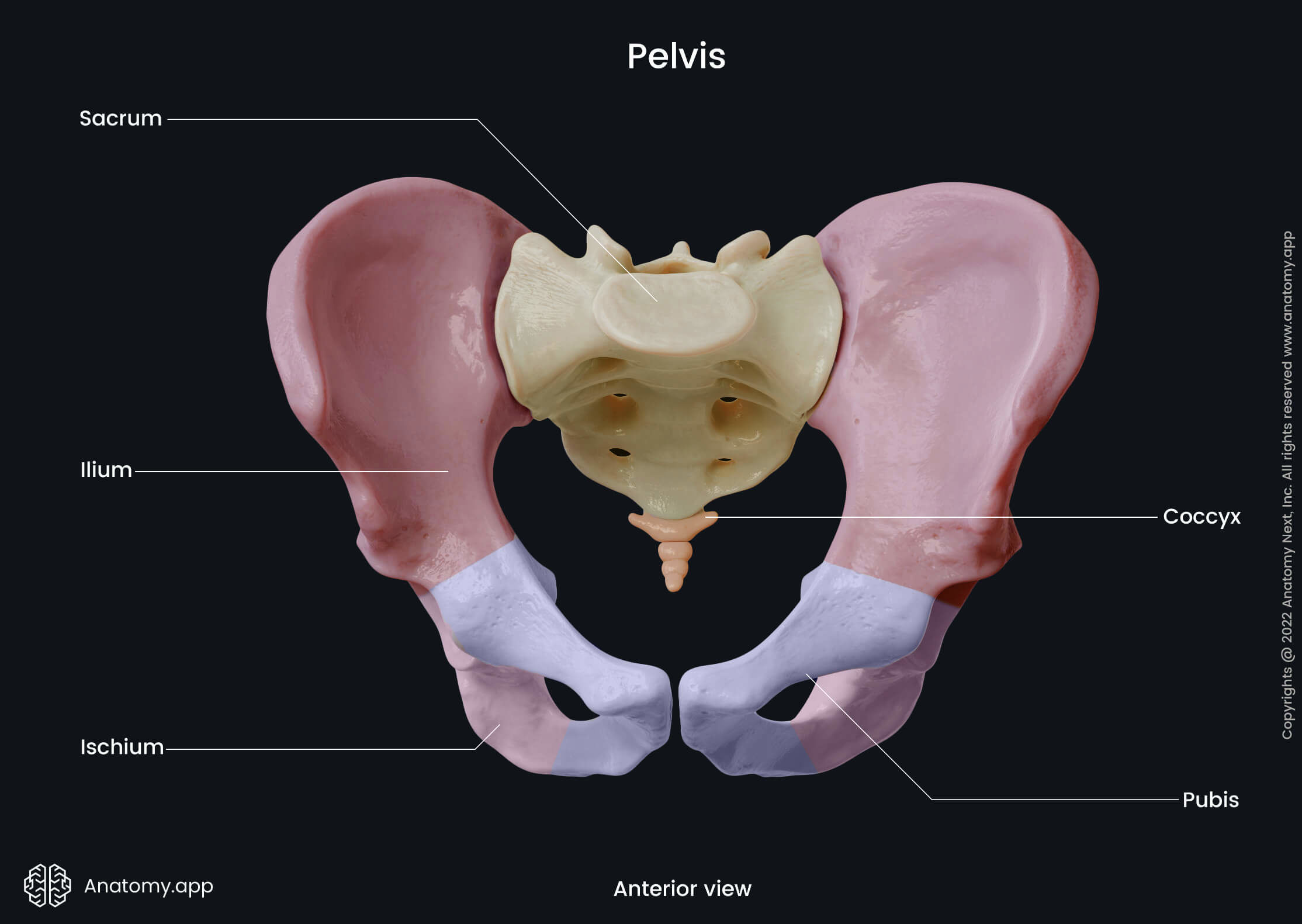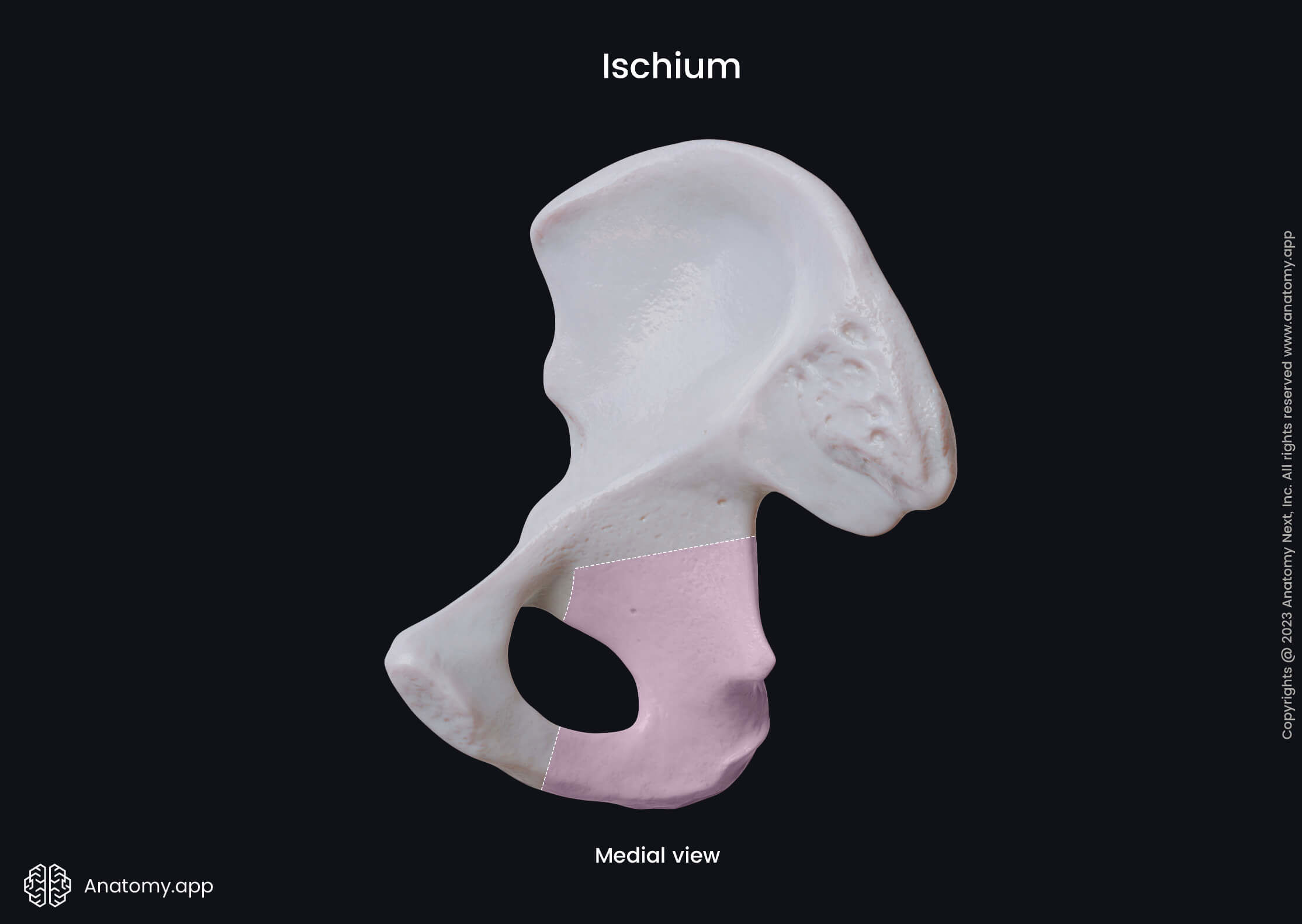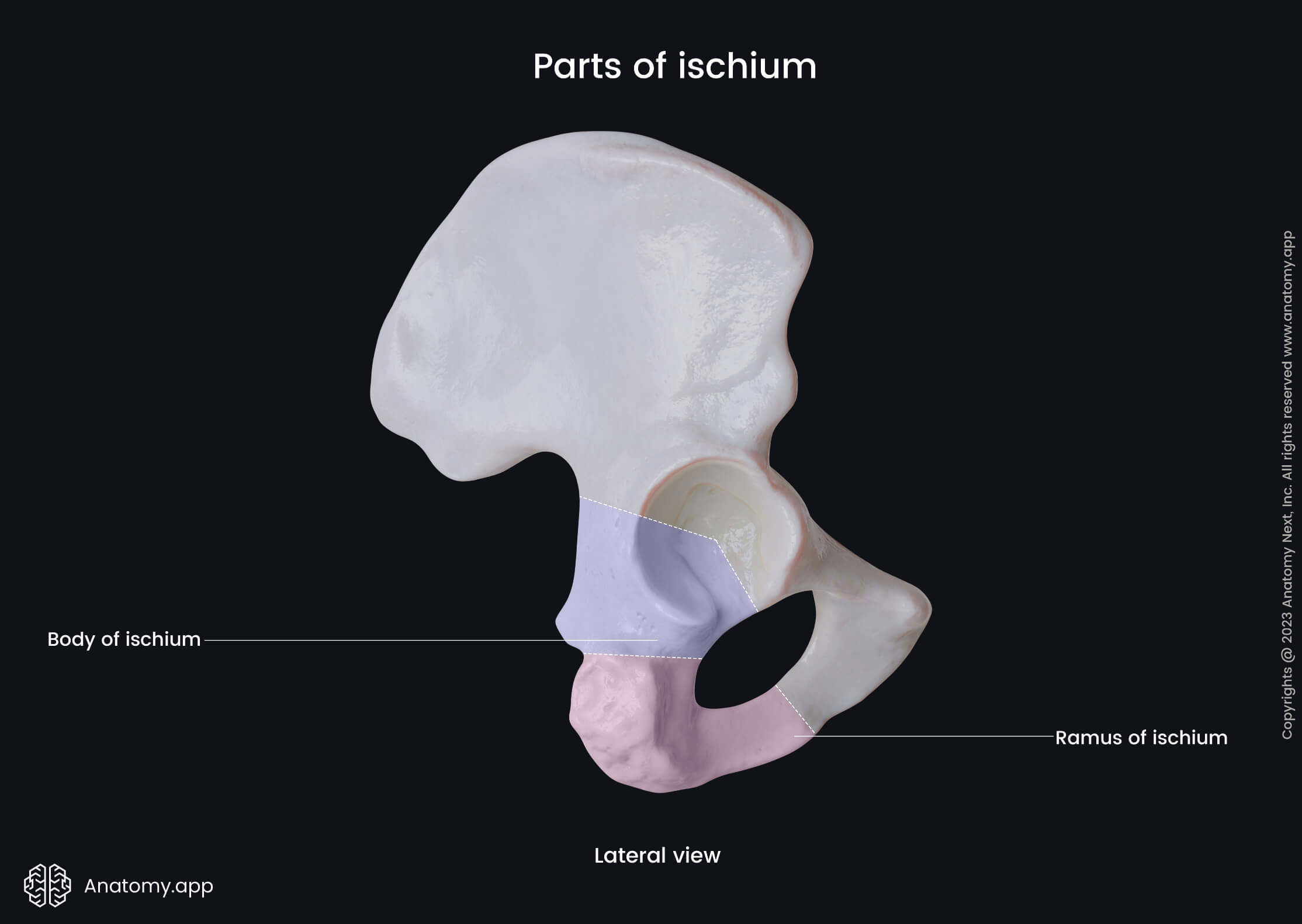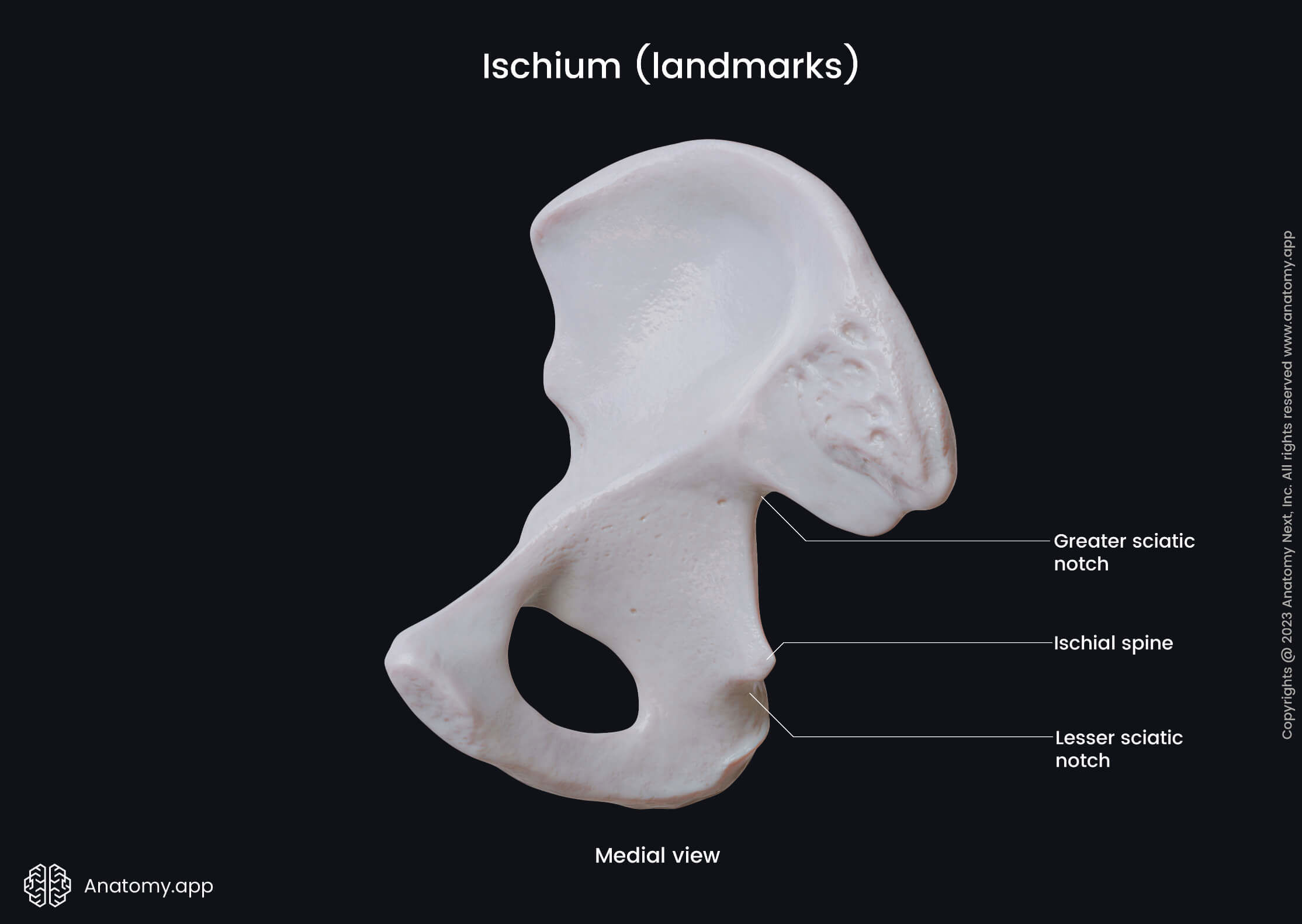- Anatomical terminology
- Skeletal system
- Joints
- Muscles
- Heart
- Blood vessels
- Lymphatic system
- Nervous system
- Respiratory system
- Digestive system
- Urinary system
- Female reproductive system
- Male reproductive system
- Endocrine glands
- Eye
- Ear
Ischium
The ischium (Latin: os ischii) is a paired bone of the pelvis. It forms the lower and posterior aspects of the hip bone and the posterior and inferior boundary of the obturator foramen.

The ischium is continuous with the pubic bone anteriorly and the ilium superiorly. This bone is composed of two main parts - the body and the ramus of the ischium.


Body of ischium
The body of ischium is a broad and rough upper part of the bone that forms the posterior one-third of the acetabulum. The body of the ischium has three surfaces - medial or pelvic, lateral or femoral and posterior surface.


Ramus of ischium
The ramus of ischium extends downward from the body, turns forward and fuses with the inferior ramus of the pubis. The ramus of the ischium contains several essential landmarks:


The ischial tuberosity is a bony process on the ramus of the ischium at the lower end of the lesser sciatic notch.
The ischial spine is a bony prominence found on the ramus of the ischium between the greater and lesser sciatic notches.
The lesser sciatic notch is a notch on the ramus of ischium located below the ischial spine between it and the ischial tuberosity.
The greater sciatic notch is a larger notch on the ramus of ischium located above the ischial spine between it and the posterior inferior iliac spine.